It looks like you're using an Ad Blocker.
Please white-list or disable AboveTopSecret.com in your ad-blocking tool.
Thank you.
Some features of ATS will be disabled while you continue to use an ad-blocker.
share:
OK People Ill Bite
Nice Video about the Geo.. Mathmatical Review .. nice interesting while the OP is placing the claimed Measurements of Cydonia tho whe you look at the whole area it tend to look like there was a Sudden Land Shift all to the Right from the View of the Picture of Cydonia The Face and the D&M pryamid .. so of Course everthing will be off ..
Now Lets look at Artifical Structures Here on Earth that look alot like The Structure's on Mars Cydonia
Shall We...
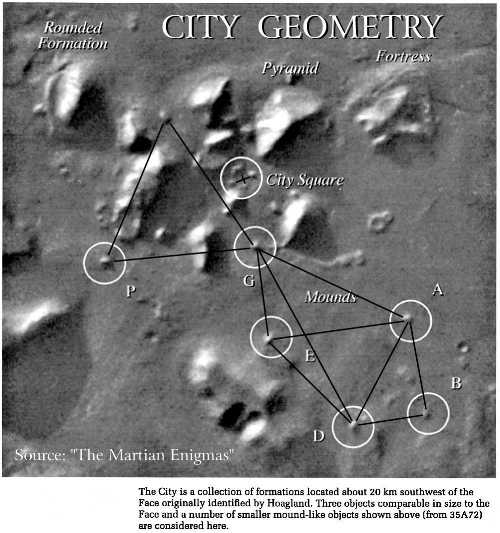
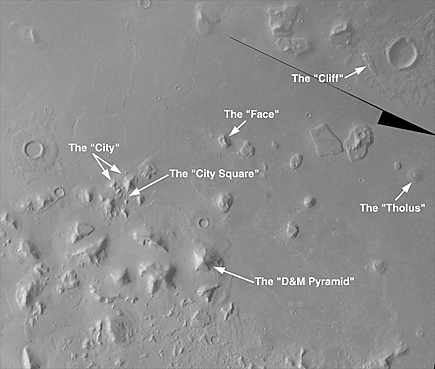
Now Here,,, is where it Get's Interesting Folks ! from a Place that was Part of Sumaria
The Face of Mars Mars, Cydonia
files.abovetopsecret.com...
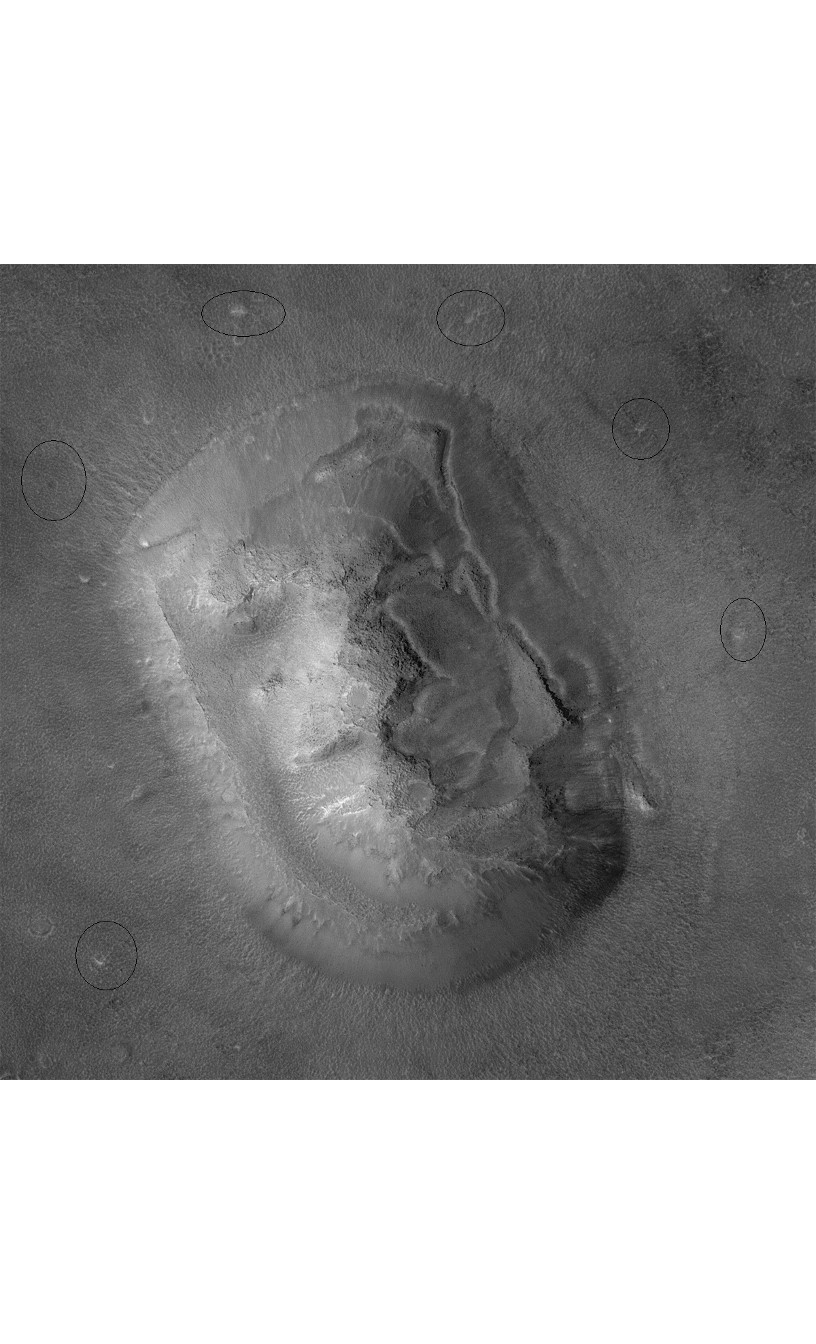
The Tepe Mound, Earth IRAN

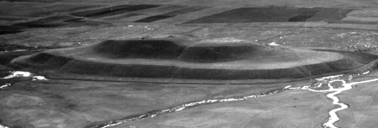
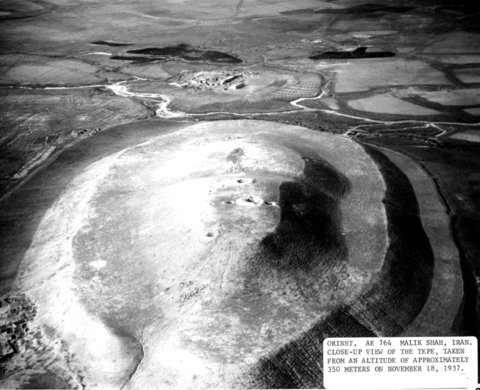
The D&M Pyramid, Mars Cydonia
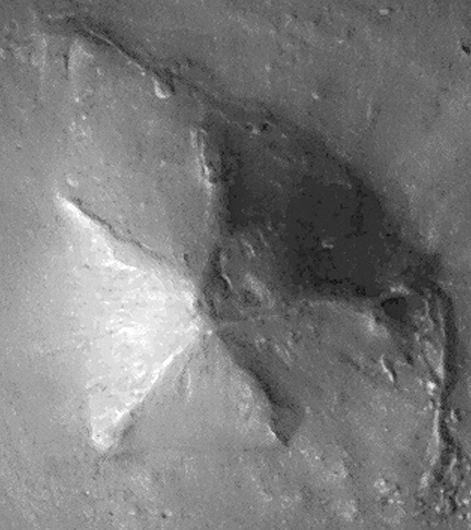
The DaDan Mound, Earth IRAN
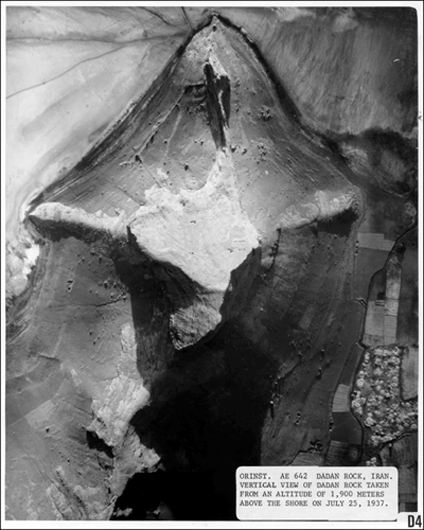
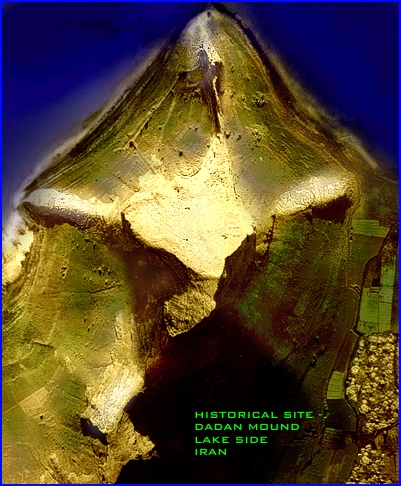
and OP! explain this of what i Circled in outline Black
yeah Go Ahead go to the Nasa Site or a legit side find the same Photo like this one
with out the Circle's of Course .. and find the Geomatry on that remember the Acuracy wil be off a little
notice the Land shift on one side ( highly Noticable ) What they repesent to me .. are MARKER's of Some Kind
from Hole's that had something like Pillers or Something to Boarder the Face ? who the Hell knows but one thing for sure they exist if every Legit Close up of thr Face of Mars even on the the NASA site. and they the Markers are
(( (ALMOST ))) the Same measure Distance as i said pretty close to all most .. and probley accurate long ago..
what are the Odd's of simlar structures that are known to be MAN MADE the TEPE Mound and DADAN Mound are like those of (-Natural-) ? Formations ? And of what i called Markers Markers Near Along the Base of the Face of Mars

just to Note yes I know that the Dadan Mound is Concaved in around the Sides. tho its claimed to some, A Manmade or a Modified mountain
Nice Video about the Geo.. Mathmatical Review .. nice interesting while the OP is placing the claimed Measurements of Cydonia tho whe you look at the whole area it tend to look like there was a Sudden Land Shift all to the Right from the View of the Picture of Cydonia The Face and the D&M pryamid .. so of Course everthing will be off ..
Now Lets look at Artifical Structures Here on Earth that look alot like The Structure's on Mars Cydonia
Shall We...


Now Here,,, is where it Get's Interesting Folks ! from a Place that was Part of Sumaria
The Face of Mars Mars, Cydonia
files.abovetopsecret.com...

The Tepe Mound, Earth IRAN



The D&M Pyramid, Mars Cydonia

The DaDan Mound, Earth IRAN


and OP! explain this of what i Circled in outline Black
yeah Go Ahead go to the Nasa Site or a legit side find the same Photo like this one
with out the Circle's of Course .. and find the Geomatry on that remember the Acuracy wil be off a little
notice the Land shift on one side ( highly Noticable ) What they repesent to me .. are MARKER's of Some Kind
from Hole's that had something like Pillers or Something to Boarder the Face ? who the Hell knows but one thing for sure they exist if every Legit Close up of thr Face of Mars even on the the NASA site. and they the Markers are
(( (ALMOST ))) the Same measure Distance as i said pretty close to all most .. and probley accurate long ago..
what are the Odd's of simlar structures that are known to be MAN MADE the TEPE Mound and DADAN Mound are like those of (-Natural-) ? Formations ? And of what i called Markers Markers Near Along the Base of the Face of Mars

edit on 3-6-2014 by Wolfenz because:
just to Note yes I know that the Dadan Mound is Concaved in around the Sides. tho its claimed to some, A Manmade or a Modified mountain
edit on 3-6-2014 by Wolfenz because: (no reason given)
a reply to: astrostu
I notice a very hard line of people whom not only believe the face to be an illusion but show a deep rooted psychological tendancy to state so in less than tender word's, the simple fact is that the face Scares a lot of these people because of the implications if it was ever prooven to be artificial, not because it is alien but precisely because it is a human face.
Perhaps they hid from the monster in the wardrobe until they were old enough to believe it was not there and so use that learned psychological defence against this possability.
There are a great number of work's both for and against the face as an artifact and I of course happen to be one of the many people whom actually believe that entire cydonlia region is an artifact of intelligent ancient presence.
And with that in mind so you all know my own prejudice, please review some of these other site's.
metaresearch.org...
www.mars-earth.com...
www.enterprisemission.com...
Of course you have an axe to grind with hoagland, the guy makes a large amount of money from selling this stuff to audiences and readers alike so may fall into the same trap as von daniken (whom was cought out making stuff up) and of course non of us in our lifetimes are ever likely to know the unabridged truth, especially with the slow down in space investment and especially since for private corporations to have an incentive there has to be a reason based on profit to go there and mars has so far no evidence of any exotic minerals or other reasons though a future colony may be possible within the next 50 years (but they said that in the days of apollo and we still do not OFFICIALLY have a moon base).
When finally a geologist sits in a base camp near to the site and actually explores the site and only then will anyone really know the truth.
Now a lot of you believe in the american stargate program (you did not mis read), now it had nothing to do with stabel wormholes large enough to walk through (which would probably collapse locat time space anyway) and everything to do with the men whom stare at goat's, it used men tested to show a degree of clarevoyance to use a process called farsight, they would sit in a dark room and be given a set of coordinates usually behind the iron curtain and there intelligence thuse gathered showed a higher than statistical degree of accuracy.
www.fas.org...
www.irva.org...
www.remoteviewer.org...
Now most remote viewers are not the real deal but mel riley most certainly was, was it chance or was it real ability?.
Here is a page about Joe mcmoneagle remote viewing the cydonia region and remember if it is fact he was not told where he was going but simply give a set of coordinates in a sealed envelope.
www.bibliotecapleyades.net...
Now for some I have stepped into the territory of fantasy but WHAT IF?.
Oh and I have experienced paranormal phenomena myself (not remote viewing but ghost and apparition, apport (teleportation or change of objects and also poltergeist activity), I am not going to answere any question on that as it would be totally off thread but let's say it was and remains unpleasant to lose my innocence of such matters.
I notice a very hard line of people whom not only believe the face to be an illusion but show a deep rooted psychological tendancy to state so in less than tender word's, the simple fact is that the face Scares a lot of these people because of the implications if it was ever prooven to be artificial, not because it is alien but precisely because it is a human face.
Perhaps they hid from the monster in the wardrobe until they were old enough to believe it was not there and so use that learned psychological defence against this possability.
There are a great number of work's both for and against the face as an artifact and I of course happen to be one of the many people whom actually believe that entire cydonlia region is an artifact of intelligent ancient presence.
And with that in mind so you all know my own prejudice, please review some of these other site's.
metaresearch.org...
www.mars-earth.com...
www.enterprisemission.com...
Of course you have an axe to grind with hoagland, the guy makes a large amount of money from selling this stuff to audiences and readers alike so may fall into the same trap as von daniken (whom was cought out making stuff up) and of course non of us in our lifetimes are ever likely to know the unabridged truth, especially with the slow down in space investment and especially since for private corporations to have an incentive there has to be a reason based on profit to go there and mars has so far no evidence of any exotic minerals or other reasons though a future colony may be possible within the next 50 years (but they said that in the days of apollo and we still do not OFFICIALLY have a moon base).
When finally a geologist sits in a base camp near to the site and actually explores the site and only then will anyone really know the truth.
Now a lot of you believe in the american stargate program (you did not mis read), now it had nothing to do with stabel wormholes large enough to walk through (which would probably collapse locat time space anyway) and everything to do with the men whom stare at goat's, it used men tested to show a degree of clarevoyance to use a process called farsight, they would sit in a dark room and be given a set of coordinates usually behind the iron curtain and there intelligence thuse gathered showed a higher than statistical degree of accuracy.
www.fas.org...
www.irva.org...
www.remoteviewer.org...
Now most remote viewers are not the real deal but mel riley most certainly was, was it chance or was it real ability?.
Here is a page about Joe mcmoneagle remote viewing the cydonia region and remember if it is fact he was not told where he was going but simply give a set of coordinates in a sealed envelope.
www.bibliotecapleyades.net...
Now for some I have stepped into the territory of fantasy but WHAT IF?.
Oh and I have experienced paranormal phenomena myself (not remote viewing but ghost and apparition, apport (teleportation or change of objects and also poltergeist activity), I am not going to answere any question on that as it would be totally off thread but let's say it was and remains unpleasant to lose my innocence of such matters.
a reply to: Wolfenz
My argument was both inferior and unnecessay compared to your own, nice, shame there religious authority's would probably prevent any real research on that site, the face like mound look's like it may have suffered later habitation defacing the top and was probably used as a city mound but the similarity is striking and show's a possible direct link between a vanished civilization here and on mars.
My argument was both inferior and unnecessay compared to your own, nice, shame there religious authority's would probably prevent any real research on that site, the face like mound look's like it may have suffered later habitation defacing the top and was probably used as a city mound but the similarity is striking and show's a possible direct link between a vanished civilization here and on mars.
Double post
edit on 3-6-2014 by LABTECH767 because: (no reason given)
originally posted by: LABTECH767
a reply to: astrostu
I notice a very hard line of people whom not only believe the face to be an illusion [...]
the simple fact is that the face Scares a lot of these people because of the implications [...]
But there's no face, not unless you're looking at old low-res, high-contrast images and use your imagination. There's nothing to be scared of. We'd LOVE to find real artificial structures off Earth. We just haven't found any yet.
Seriously, can you look at the HiRISE image of that plateau, and see a face?
Let's see ... thank you to TinfoilTP, Rob48, wildespace, Blister, semperfortis, nighthawk1954, eManym, theMediator, tsurfer200h, ArMaP, asciikewl,
Rosinitiate, ionwind, TommyD1966, ForteanOrg, and symptomoftheuniverse.
People commenting on the title: I meant it to be a bit vague so as to draw in not just "skeptics" but people who are generally interested in the area and may be more geared towards the anomalist side.
NoRulesAllowed - Nope. Lots of people still argue that this stuff is real, including the 34th most popular book on Amazon under Mars right now (Bara's steaming pile of book).
amazing - What do you consider "very few images of this entire area"? There are actually at least 189 images that include just the "face" mesa. Hardly "very few." This is a common misconception and if you'd just look, you'd see that there are PLENTY of images.
Wolfenz - I don't know what you're talking about with a "sudden land shift all to the right." Your reference to the "DaDan Mound" is one I've never seen, and I can only find references to it from conspiracy sites; please show me where there is a legitimate research site talking about it. As for your circled features around the "face" mesa, it looks like you have circled tiny features that are slightly brighter or darker than the surroundings, which you can find ANYWHERE on Mars, especially because the ones you found look mostly like boulders, which will always show a bright (sunlit) and dark (shadow) side. I went to a random area in a CTX image (~6 m/px) and found many of these similar features, not anywhere near the "face."
LABTECH767 - I am neither scared nor have my words been "less than tender." I have been remarkably reserved compared with most. You also seem to assume I have not read those websites; I have. And I'll note that an investigation into the "Face" feature had nothing to do with my video. You also state "of course [I] have an axe to grind with [H]oagland," which is not true. I don't know him personally, and I have never attacked him personally, I've only addressed his claims. I am frustrated that people fall for his claims when they are demonstrably wrong, but that is something completely different from having an axe to grind with him. Remember when he claimed comet Elenin was a spaceship? And ISON was a spaceship? How many times does he have to be wrong before people will stop listening to him? As for remote viewing, I give it as much credence as astrology, which is to say, zero.
People commenting on the title: I meant it to be a bit vague so as to draw in not just "skeptics" but people who are generally interested in the area and may be more geared towards the anomalist side.
NoRulesAllowed - Nope. Lots of people still argue that this stuff is real, including the 34th most popular book on Amazon under Mars right now (Bara's steaming pile of book).
amazing - What do you consider "very few images of this entire area"? There are actually at least 189 images that include just the "face" mesa. Hardly "very few." This is a common misconception and if you'd just look, you'd see that there are PLENTY of images.
Wolfenz - I don't know what you're talking about with a "sudden land shift all to the right." Your reference to the "DaDan Mound" is one I've never seen, and I can only find references to it from conspiracy sites; please show me where there is a legitimate research site talking about it. As for your circled features around the "face" mesa, it looks like you have circled tiny features that are slightly brighter or darker than the surroundings, which you can find ANYWHERE on Mars, especially because the ones you found look mostly like boulders, which will always show a bright (sunlit) and dark (shadow) side. I went to a random area in a CTX image (~6 m/px) and found many of these similar features, not anywhere near the "face."
LABTECH767 - I am neither scared nor have my words been "less than tender." I have been remarkably reserved compared with most. You also seem to assume I have not read those websites; I have. And I'll note that an investigation into the "Face" feature had nothing to do with my video. You also state "of course [I] have an axe to grind with [H]oagland," which is not true. I don't know him personally, and I have never attacked him personally, I've only addressed his claims. I am frustrated that people fall for his claims when they are demonstrably wrong, but that is something completely different from having an axe to grind with him. Remember when he claimed comet Elenin was a spaceship? And ISON was a spaceship? How many times does he have to be wrong before people will stop listening to him? As for remote viewing, I give it as much credence as astrology, which is to say, zero.
a reply to: LABTECH767
Pot & Kettle you can't admit you are wrong I remenber when the first LOW RES images were shown of the face on tv having an interest in all things re space it was an interesting prospect it turned out to be a natural mound but it is still interesting.
As for Hoaxland he is a joke!
Pot & Kettle you can't admit you are wrong I remenber when the first LOW RES images were shown of the face on tv having an interest in all things re space it was an interesting prospect it turned out to be a natural mound but it is still interesting.
As for Hoaxland he is a joke!
originally posted by: wmd_2008
a reply to: LABTECH767
Pot & Kettle you can't admit you are wrong I remenber when the first LOW RES images were shown of the face on tv having an interest in all things re space it was an interesting prospect it turned out to be a natural mound but it is still interesting.
As for Hoaxland he is a joke!
One of the biggest reasons the original "face" illusion was so striking is that there just happened to be a data drop-out creating a black pixel right where the nostril should be. Of course, there were lots of other black pixels, but that one landing by coincidence in just the right spot turned it from "Hmm, looks a bit like a face" to "Wow - it's a face!"

I was just looking into Cydonia the other day. I was wondering what it was all about, having hear about it many years ago...
So I looked over almost everything I could find, and in a few hours went from "Wow, what's that?" to, "Oh...oh well."
I would've loved to actually find obscure evidence about something amazing in the region.
Instead I found your extremely interesting video! Which is also a great find indeed. Really, really good work. I wish I had your chops to make graphs and make pretty math in video form.
Just fantastic.
So I looked over almost everything I could find, and in a few hours went from "Wow, what's that?" to, "Oh...oh well."
I would've loved to actually find obscure evidence about something amazing in the region.
Instead I found your extremely interesting video! Which is also a great find indeed. Really, really good work. I wish I had your chops to make graphs and make pretty math in video form.
Just fantastic.
Whatever.... I'm not a Hoagland fan, but I tend to find him more interesting to listen to than outright claims that there is absolutely nothing
there. Hoagland can't prove his claims, but neither can the former. I've looked at those pictures many, many times, and I continue to find them
interesting. I for one will not dismiss it all with the help of 'science.'
a reply to: astrostu
MAP Hints Polar Shift On Mars : Scientist say Impacts trace Ancient Equator
www.nbcnews.com...
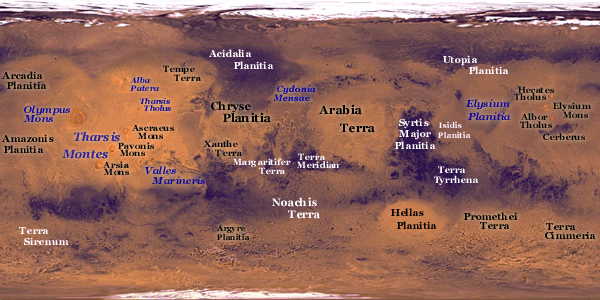
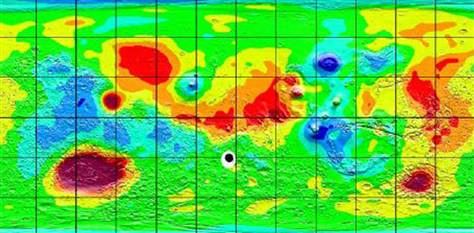
An Extreme Polar Shift tends to cause a ( Land Shift ) .. well considering if there was a SUDDEN one .. Especially with Mass of Water pushing aside .. ? Ever seen some results after a Hurricane. a land Slide ? Levey Dam Breaks.. etc..
Side View
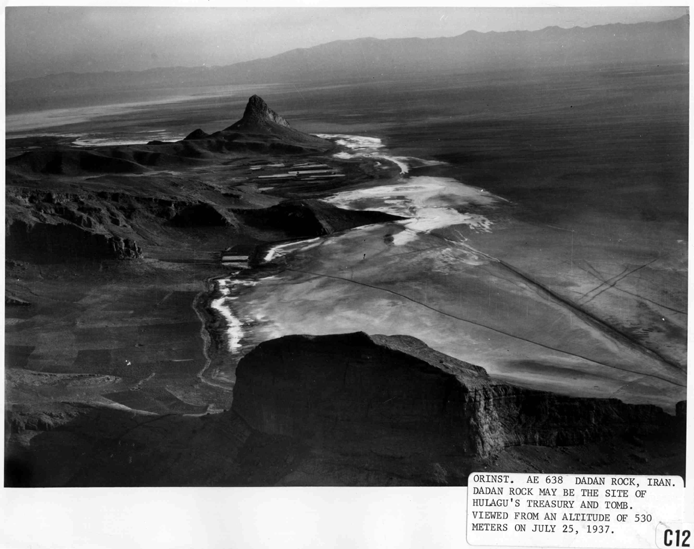
Dadan Rock in Iran, possibly once the site of Hulagu's treasury and tomb
Source: oi.uchicago.edu...
Is this Good Enough for ya ?
The Oriental institute of the University of Chicago
Iran: Aerial Survey Flights
oi.uchicago.edu...
I can see it Now ATS'ers going Ape # !! LOL
Ancient Ruins Building , City's to Mounds
a Few to Note: besides the ones mentioned IRAN: Naqsh-i-Rustam , IRAN: Tall-i-Bakun, IRAN: Pasargadae, IRAN: Sasanian Gur
What I Circled is of what it is , there is no others that are around with that kind of geometry.. and just about in every 100+ or so pics of the face of Mars by NASA . shows the Same type of object ( Holes, Boulders, Objects out of the Norm ) what ever they are

I just more less connected the DOTs
And you said: can find Anywhere ! . Well Not Hardly LOL ' Not from what I can See ( Kudos tho ) Im more Focused on the Large ones you know the Most Noticeable and there mostly are probably Buried ( hence ) land Shift from a Quick Pole Shift
Well here a thought Ever Spin a a toy TOP and flick some thing at it like the size of a tiny pebble or Blow on it
www.nbcnews.com...
What Happens ? just a little Wobble ? its the Formula in the Equation..
Well thanks for the Effort.. and post the CTX image So me and the Rest of ATS can see that will be great ..
ohh yeah by the way how strong is that Line on your Pole ?
Wolfenz -
I don't know what you're talking about with a "sudden land shift all to the right." Your reference to the "DaDan Mound" is one I've never seen, and I can only find references to it from conspiracy sites; please show me where there is a legitimate research site talking about it. As for your circled features around the "face" mesa, it looks like you have circled tiny features that are slightly brighter or darker than the surroundings, which you can find ANYWHERE on Mars, especially because the ones you found look mostly like boulders, which will always show a bright (sunlit) and dark (shadow) side. I went to a random area in a CTX image (~6 m/px) and found many of these similar features, not anywhere near the "face."
I don't know what you're talking about with a "sudden land shift all to the right.
MAP Hints Polar Shift On Mars : Scientist say Impacts trace Ancient Equator
www.nbcnews.com...


This map shows gravity readings for regions of Mars, reflecting surface elevation. The black dot indicates the center of a great circle of impacts and may represent the planet's ancient south pole.
An Extreme Polar Shift tends to cause a ( Land Shift ) .. well considering if there was a SUDDEN one .. Especially with Mass of Water pushing aside .. ? Ever seen some results after a Hurricane. a land Slide ? Levey Dam Breaks.. etc..
Your reference to the "DaDan Mound" is one I've never seen, and I can only find references to it from conspiracy sites; please show me where there is a legitimate research site talking about it.
Side View

Dadan Rock in Iran, possibly once the site of Hulagu's treasury and tomb
Source: oi.uchicago.edu...
Is this Good Enough for ya ?
The Oriental institute of the University of Chicago
Iran: Aerial Survey Flights
oi.uchicago.edu...
I can see it Now ATS'ers going Ape # !! LOL
Ancient Ruins Building , City's to Mounds
a Few to Note: besides the ones mentioned IRAN: Naqsh-i-Rustam , IRAN: Tall-i-Bakun, IRAN: Pasargadae, IRAN: Sasanian Gur
As for your circled features around the "face" mesa, it looks like you have circled tiny features that are slightly brighter or darker than the surroundings, which you can find ANYWHERE on Mars, especially because the ones you found look mostly like boulders, which will always show a bright (sunlit) and dark (shadow) side. I went to a random area in a CTX image (~6 m/px) and found many of these similar features, not anywhere near the "face."
What I Circled is of what it is , there is no others that are around with that kind of geometry.. and just about in every 100+ or so pics of the face of Mars by NASA . shows the Same type of object ( Holes, Boulders, Objects out of the Norm ) what ever they are

I just more less connected the DOTs
And you said: can find Anywhere ! . Well Not Hardly LOL ' Not from what I can See ( Kudos tho ) Im more Focused on the Large ones you know the Most Noticeable and there mostly are probably Buried ( hence ) land Shift from a Quick Pole Shift
Well here a thought Ever Spin a a toy TOP and flick some thing at it like the size of a tiny pebble or Blow on it
Like Earth, the poles of Mars have not always been where they are today. In fact, Mars seems to have transformed dramatically during its roughly 4.5-billion-year life. One striking feature known as the Tharsis Bulge — it's 5 miles high (8 kilometers) and covers a sixth of the planet — illustrates how a changing shape would have altered its axis over time, scientists say. The five basins identified in the new study are Argyre, Hellas, Isidis, Thaumasia and Utopia. They were thought to have all formed prior to the development of the Tharsis Bulge.
The asteroid may have been 500 to 600 miles in diameter (800 to 1,000 kilometers). It came too close to Mars at some point and gravity yanked it apart, the thinking goes. Later, the pieces hit the planet.
www.nbcnews.com...
What Happens ? just a little Wobble ? its the Formula in the Equation..
Well thanks for the Effort.. and post the CTX image So me and the Rest of ATS can see that will be great ..
ohh yeah by the way how strong is that Line on your Pole ?
edit on 4-6-2014 by Wolfenz because: (no reason given)
a reply to: astrostu
Well spoken and a solid reply.
I never knew he linked the comet's to spacecraft but like I said he may simply be another von daniken but I do not want to therefore claim every single statement he made is wrong though on one of his curiosity videos he claimed a boulder was a boiler and I could not see it even though I search for stuff myself.
Your point is spoken with passion and with intensity I can feel reading your word's and I definitely respect that as I respect your belief's, you are probably correct but there is something there I feel it and can not quantify that in a scientific way.
As for the face you also have to take in to account solar angle at time of imaging, the fact the image was processed three times in a method which removed some detail and increased other detail meaning if you had looked at it the image would be different to the processed image, that is actually gone over on one video on the net and how the third party image specialists hired by NASA processed the image much to the chagrin of some researchers whom were less than pleased and felt it had been done purposely to obscure the face.
And I never actually meant to accuse you directly it was a generalization so I am sorry if I came accross that way and in my book a speculative approach even a conspiracy theorist one must be open to all data even when it is inconveniant, that fact therefore remains that processed or not the Released image doese not appear to show a face but a highly weathered rocky mesa, still if the image was processed three times with the sun at a high angle so as to remove contrast between light and dark area's it remains demonstable that the image would lose certain large detail features and if it is as old as we think then indeed it would be weathered and eroded especially if as a hypothetical artifact it had been carved from a natural mesa or build up of large component stone and even more so if it was a soft infilled structure that was degrading over time.
Well spoken and a solid reply.
I never knew he linked the comet's to spacecraft but like I said he may simply be another von daniken but I do not want to therefore claim every single statement he made is wrong though on one of his curiosity videos he claimed a boulder was a boiler and I could not see it even though I search for stuff myself.
Your point is spoken with passion and with intensity I can feel reading your word's and I definitely respect that as I respect your belief's, you are probably correct but there is something there I feel it and can not quantify that in a scientific way.
As for the face you also have to take in to account solar angle at time of imaging, the fact the image was processed three times in a method which removed some detail and increased other detail meaning if you had looked at it the image would be different to the processed image, that is actually gone over on one video on the net and how the third party image specialists hired by NASA processed the image much to the chagrin of some researchers whom were less than pleased and felt it had been done purposely to obscure the face.
And I never actually meant to accuse you directly it was a generalization so I am sorry if I came accross that way and in my book a speculative approach even a conspiracy theorist one must be open to all data even when it is inconveniant, that fact therefore remains that processed or not the Released image doese not appear to show a face but a highly weathered rocky mesa, still if the image was processed three times with the sun at a high angle so as to remove contrast between light and dark area's it remains demonstable that the image would lose certain large detail features and if it is as old as we think then indeed it would be weathered and eroded especially if as a hypothetical artifact it had been carved from a natural mesa or build up of large component stone and even more so if it was a soft infilled structure that was degrading over time.
a reply to: Wolfenz
I'm going to number these to keep track of them.
1. Mars' true polar wander: What does this have to do with Cydonia whatsoever? I would think this HURTS the argument for some of the special geometry because RCH claims that the latitude is important, and others point to angles of the pyramid-like feature relative to east or north. But those would be different under a different geographic pole. If you're arguing that it would have eroded the feature, that still does not at all explain why the angles pointed to as important (a) don't hold up under new imagery, (b) are different in 3D than the 2D projection, and (c) the number of them is the same as what you would get if the feature were completely random.
2. Dadan Rock: Other than the photos I find, including at your link, I cannot find any scholarly references to it other than from conspiracy sites that are talking about Cydonia or Atlantis, which don't count; and, refer to my point 1(c) above.
3. You're simply wrong. Here's a random image from a random spot somewhat nearby to the "face" feature. And here is a random image with the "face" in the middle. You can see that in both there are your features, roughly the same size. They're boulders. You can also just look anywhere else in that CTX image of the "face" and see them.
4. The NBC article: This is not at all accepted in the scientific community. I personally have done work on those large basins and they formed several hundred million years apart in time. Tharsis is also one of the oldest features on the planet, predating (as a feature, not the latest volcanism) most of the large basins.
I'm going to number these to keep track of them.
1. Mars' true polar wander: What does this have to do with Cydonia whatsoever? I would think this HURTS the argument for some of the special geometry because RCH claims that the latitude is important, and others point to angles of the pyramid-like feature relative to east or north. But those would be different under a different geographic pole. If you're arguing that it would have eroded the feature, that still does not at all explain why the angles pointed to as important (a) don't hold up under new imagery, (b) are different in 3D than the 2D projection, and (c) the number of them is the same as what you would get if the feature were completely random.
2. Dadan Rock: Other than the photos I find, including at your link, I cannot find any scholarly references to it other than from conspiracy sites that are talking about Cydonia or Atlantis, which don't count; and, refer to my point 1(c) above.
3. You're simply wrong. Here's a random image from a random spot somewhat nearby to the "face" feature. And here is a random image with the "face" in the middle. You can see that in both there are your features, roughly the same size. They're boulders. You can also just look anywhere else in that CTX image of the "face" and see them.
4. The NBC article: This is not at all accepted in the scientific community. I personally have done work on those large basins and they formed several hundred million years apart in time. Tharsis is also one of the oldest features on the planet, predating (as a feature, not the latest volcanism) most of the large basins.
a reply to: LABTECH767
I think the only thing I need to respond to is: "As for the face you also have to take in to account solar angle at time of imaging, the fact the image was processed three times in a method which removed some detail and increased other detail meaning if you had looked at it the image would be different to the processed image ... processed or not the Released image doese not appear to show a face but a highly weathered rocky mesa ..."
Are you by chance referring to what Art Bell termed, the "Catbox Image"? If so - and really, regardless of if so or not - as I responded to "amazing," there are at least 189 images that include the "face" that have been taken by NASA and ESA. From many different spacecraft. Go to this link. Right in the middle is the "face" feature. Click the pointer tool, click near the middle, and then on any of the images that come up at the bottom.
Don't like CTX? Then replace the "ctx" in the URL with "viking" or "hrsc" or "hirise" or "moc" or "themis" to see other spacecrafts' images taken over the years. Keep in mind that this is a PREVIEW website and not everything has been processed completely, so there are some geometric issues (the CTX images appear a bit squashed) and the lighting has been stretched too much in some of them. But the original data are all available if you know how to process them.
My point here - and it sounds like we're going to just agree to disagree on the conclusions - is that you shouldn't base your conclusions on any single image or single analysis, especially in this case. There are nearly 200 images of the "face." I'm fine if you think that it shows something artificial — I disagree, but that's your prerogative. But, at least base it on the data available, not one image that you apparently have problems with.
I think the only thing I need to respond to is: "As for the face you also have to take in to account solar angle at time of imaging, the fact the image was processed three times in a method which removed some detail and increased other detail meaning if you had looked at it the image would be different to the processed image ... processed or not the Released image doese not appear to show a face but a highly weathered rocky mesa ..."
Are you by chance referring to what Art Bell termed, the "Catbox Image"? If so - and really, regardless of if so or not - as I responded to "amazing," there are at least 189 images that include the "face" that have been taken by NASA and ESA. From many different spacecraft. Go to this link. Right in the middle is the "face" feature. Click the pointer tool, click near the middle, and then on any of the images that come up at the bottom.
Don't like CTX? Then replace the "ctx" in the URL with "viking" or "hrsc" or "hirise" or "moc" or "themis" to see other spacecrafts' images taken over the years. Keep in mind that this is a PREVIEW website and not everything has been processed completely, so there are some geometric issues (the CTX images appear a bit squashed) and the lighting has been stretched too much in some of them. But the original data are all available if you know how to process them.
My point here - and it sounds like we're going to just agree to disagree on the conclusions - is that you shouldn't base your conclusions on any single image or single analysis, especially in this case. There are nearly 200 images of the "face." I'm fine if you think that it shows something artificial — I disagree, but that's your prerogative. But, at least base it on the data available, not one image that you apparently have problems with.
I usually skip videos but I had to bite when I saw people praising it. Nicely done, a little more math than I normally like to take in (not my strong
suit!) but I follow; you bring up good points and I tend to agree.. S&F for you sir.
I'd like to see evidence of non-natural anomalies on Mars just as much as the next guy but over the years I haven't really seen the evidence of it, and I almost never see the things people claim they see when I'm looking at the same picture. The face of course was a bit interesting before we had higher res photos of it. It seems like a lot of pareidolia and wishful thinking going on.
I'd like to see evidence of non-natural anomalies on Mars just as much as the next guy but over the years I haven't really seen the evidence of it, and I almost never see the things people claim they see when I'm looking at the same picture. The face of course was a bit interesting before we had higher res photos of it. It seems like a lot of pareidolia and wishful thinking going on.
a reply to: duke396
Thanks duke. I tend to be the same way, not wanting to click through to watch a movie. Especially one that's over 15 minutes long. Next one'll be shorter.
I also would be very happy if we did find evidence for intelligent life having existed on Mars -- any life, even. My problem is that all the "evidence" comes in the form of these anomalies and paredolia and things that could easily be other things. Give me a stargaze, a Mac computer (Windows would not demonstrate intelligence ... ), a mud hut -- anything, really. Not a mile-long mesa that in some light in one photo looks like a face.
Thanks duke. I tend to be the same way, not wanting to click through to watch a movie. Especially one that's over 15 minutes long. Next one'll be shorter.
I also would be very happy if we did find evidence for intelligent life having existed on Mars -- any life, even. My problem is that all the "evidence" comes in the form of these anomalies and paredolia and things that could easily be other things. Give me a stargaze, a Mac computer (Windows would not demonstrate intelligence ... ), a mud hut -- anything, really. Not a mile-long mesa that in some light in one photo looks like a face.
edit on 5-6-2014 by astrostu because: (no reason given)
new topics
-
RFK is Trumps health pick
2024 Elections: 1 hours ago -
Thanksgiving 2024
Member Art: 7 hours ago -
The art of being offended
Social Issues and Civil Unrest: 9 hours ago -
FLORIDA Sues Biden-Harris FEMA for Denying Disaster Assistance to Homeowners with TRUMP Signs.
US Political Madness: 10 hours ago
top topics
-
Turns out, they planned to go after P-nut.
US Political Madness: 14 hours ago, 21 flags -
The art of being offended
Social Issues and Civil Unrest: 9 hours ago, 18 flags -
FLORIDA Sues Biden-Harris FEMA for Denying Disaster Assistance to Homeowners with TRUMP Signs.
US Political Madness: 10 hours ago, 13 flags -
Thanksgiving 2024
Member Art: 7 hours ago, 10 flags -
RFK is Trumps health pick
2024 Elections: 1 hours ago, 9 flags
active topics
-
Comcast dumping MSNBC
Mainstream News • 26 • : WeMustCare -
President-elect TRUMP Picks MATT GAETZ for his ATTORNEY GENERAL - High Level PANIC Ensues.
2024 Elections • 71 • : WeMustCare -
Kamala Harris tells Oprah she will kill an intruder
US Political Madness • 43 • : WeMustCare -
Mike Tyson returns 11-15-24
World Sports • 27 • : Lumenari -
Elon's Starlink Stole The Election For Trump--Leftist Conspiracy Theorists Charge
General Conspiracies • 44 • : DdPoolDude -
Encouraging News Media to be MAGA-PAF Should Be a Top Priority for Trump Admin 2025-2029.
Education and Media • 69 • : WeMustCare -
WATCH LIVE: US Congress hearing on UFOs, unidentified anomalous phenomena
Aliens and UFOs • 53 • : yuppa -
Turns out, they planned to go after P-nut.
US Political Madness • 27 • : Ektar -
RFK is Trumps health pick
2024 Elections • 2 • : rickymouse -
Thune selected as Senate Republican Leader
US Political Madness • 71 • : yuppa
